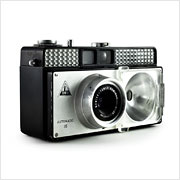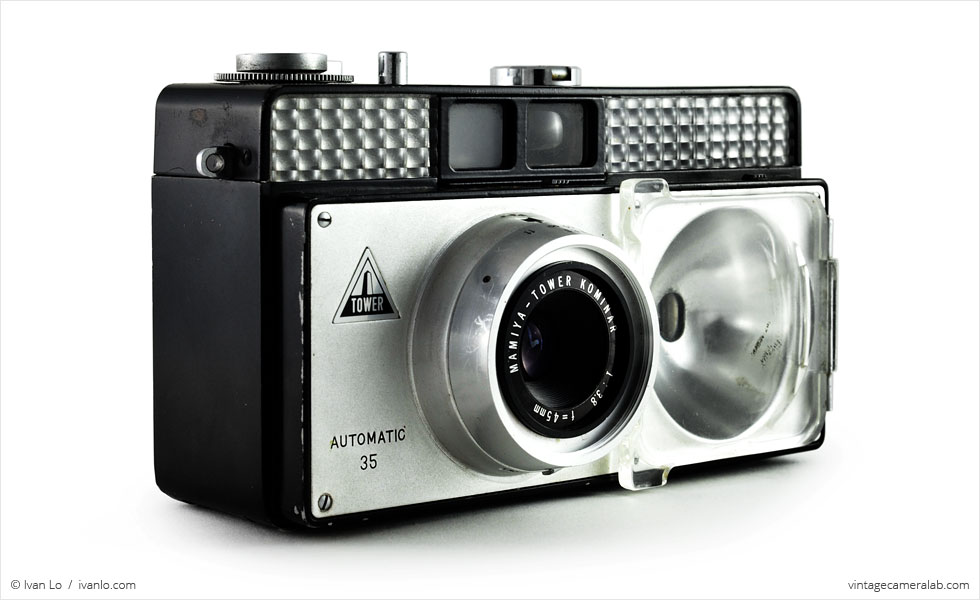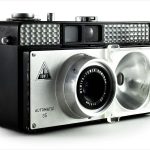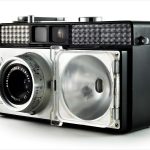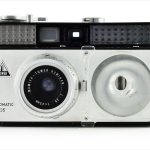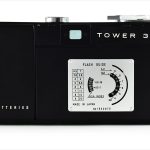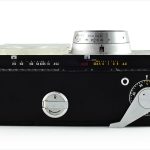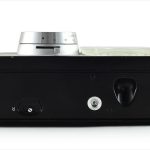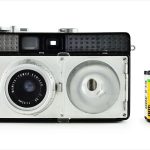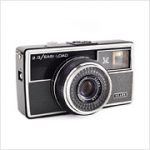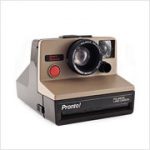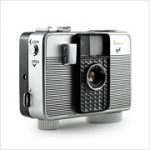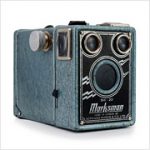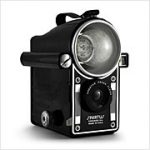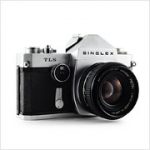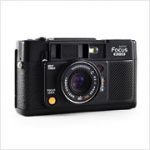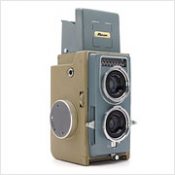Tower 39 Automatic 35 Specifications
| Manufacturer: | Mamiya Optical Co., Ltd. for |
| Sears, Roebuck and Co. | |
| Origin: | USA |
| Made in: | Japan |
| Introduced: | 1961 |
| Type: | Viewfinder |
| Format: | 135 Film |
| Dimensions: | 13.8 x 8.4 x 6.6 cm |
Tower 39 Automatic 35 Overview
The Tower 39 Automatic 35 is an unusual looking fixed-lens viewfinder camera manufactured in Japan as the Mamiya Automatic 35 EEF and rebadged for sale in America under the Sears, Roebuck & Company’s Tower brand. As one of the largest retailers in the world at the time, Sears sold a huge variety of cameras including those that it arranged to have sold under its own in-house brands.
As far as cameras go, the Tower 39 has a fairly unique design: alongside its lens is a single-use flashbulb holder, making it the very first Japanese-made camera to feature a built-in flash. The rotating ring around the Mamiya-Tower Kominar 45mm f/3.8 lens adjusts focus with handy zone settings for those that would rather not bother with measuring distances. The shutter speed is selected by a tab on the bottom of the lens barrel with the readings visible via a window at the top. Immediately above the lens and flash unit is a ledge that houses the lens’s aperture controls as well as the film speed indicator. Just above the ledge is the viewfinder and selenium light meter that controls the camera’s automatic exposure system.
The top of the camera is fairly sparse, being home to only a film rewind knob, threaded shutter button, and a film advance lever with a frame counter at its base. The back contains the battery and film compartments. The battery door opens by just pulling down on its top edge but the film door (with accompanying flash calculator) only pops open when you pull upward on the metal frame surrounding the viewfinder. The film rewind release, tripod socket, and flashbulb ejector switch can be found on the bottom.
I was immediately drawn to the Tower 39’s outrageous looks as soon as I discovered it and within weeks, I got one on eBay and had it on my shelf. There are a few other Tower models that have a similar design and most of them were built for Sears by the Chicago-based United States Camera Corporation so it’s probably only a matter of time before more of them make it into my collection.
Find your very own Tower 39 Automatic 35 on eBay.
McKeown, James M. and Joan C. McKeown’s Price Guide to Antique and Classic Cameras, 2001-2002. (Grantsburg, WI, USA: Centennial Photo Service, 2001), p 445, 601.
